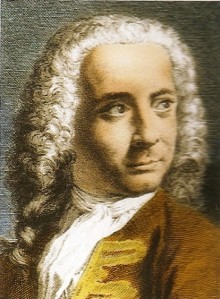User talk:Hopelessdreamdealer
|
Our first steps tour and our frequently asked questions will help you a lot after registration. They explain how to customize the interface (for example the language), how to upload files and our basic licensing policy (Wikimedia Commons only accepts free content). You don't need technical skills in order to contribute here. Be bold when contributing and assume good faith when interacting with others. This is a wiki. More information is available at the community portal. You may ask questions at the help desk, village pump or on IRC channel #wikimedia-commons (webchat). You can also contact an administrator on their talk page. If you have a specific copyright question, ask at the copyright village pump. |
|
-- Wikimedia Commons Welcome (talk) 16:31, 3 December 2016 (UTC)
Canaletto, the Venice painter of the Canals
[edit]Canaletto – the Venice painter--Hopelessdreamdealer (talk) 21:26, 4 December 2016 (UTC)Italic text
Giovanni Antonio Canal was born in October 1697, Venice.
One of the most influential landscape painters of his time, he became known to the world as Canaletto.

1. Biography
His father, Bernardo Canal, was a theatrical scenery painter, hence the mononym Canaletto "little Canal" and in his early years, Giovanni was for short a theater designer. He accompanied his father to Rome in 1720 but obviously the white canvas spoke more to him than any scenario so he abandoned the theatre and began to draw and paint architectural views.
His earlier works were strictly representational – like sharp topographical views of city landscapes, while later on his paintings had blurred and impressionistic images, style related to the Avant-garde. The English businessman Joseph Smith introduced Canaletto to the public by helping him sell his paintings and enter English collections during 1730-1742, his most productive period, and sold the artist’s finest group of works to King George III in 1763.

In 1741 the War of the Austrian Succession interfered with the flow of visitors to Venice and Canaletto’s works were nearly forgotten, when Smith suggested him to take up etching, which further developed Giovanni’s skills and marked a significant change in his art.
2. England period
In 1746 he settled in England for nearly a decade. He continued to paint city scenes and urban landscapes, bridges, castles and houses, only now his subject was London.

This period marked the decline in the quality of his work as the grey and dank streets of London did not inspire Canaletto as much as the high blue skies of Venice, where the sunlight was always delicately dancing on the water’s surface and creating a golden fuzz around every building for him to awe and re-create on the canvas.
3. Latest years
In 1755 he returned to Italy but his works never regained the quality and vitality of his pre-English period, nor did he create more similar landscapes but mainly experimented in new styles. After a previous refusal, he was elected to the Venetain Academy in 1763 where Canaletto presented his architectural capture of the interior of the courtyard of Galleria Accademia. Seven months after attending a meeting of the Academia, on April 19, 1768, Canaletto died of inflammation of the bladder and was buried in Venice.
4. Destined for Art
Canaletto’s family was one of painters, including his father, brother and nephew. Thus, he always had their support but managed to surpass them by hard work and disciplined training, combining them with what all great artists have: the spark to dare to create wonders from nothing alike the Creator. He painted both indoors and outdoors, and it is not hard to differentiate blurred and darker images made indoors and the sharper, more detailed depictions of the people and the buildings painted outside, as they catch the sunlight with such precision that one could swear the water of the canals is shivering.

6. Sources:
http://www.nga.gov/content/ngaweb/Collection/artist-info.1080.html
https://www.nationalgallery.org.uk/artists/canaletto
http://www.canalettogallery.org/The-Molo-and-the-Piazzetta-San-Marco,-Venice.html
http://www.biography.com/people/canaletto-9236731
http://totallyhistory.com/canaletto/